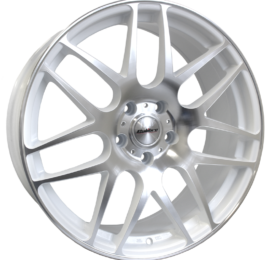Description
Checking tyre air pressure, and regular tyre maintenance such as rotation, alignment and inspections can help you to save money.
It can extend the life of your tyres so you don’t have to buy as often
Simple things like checking your tyre pressure to make sure that they are properly inflated can make a real difference in how long your tyres last. Under- or over-inflated tyres don’t wear evenly and won’t last as long.
For example, a tyre that is consistently 20% under- inflated can last 20% less.
This means that a tyre that should normally last 40,000 km would be worn out by 32,000 km.
Also, since the front and rear axles and right and left sides of your car wear down your tyres differently, rotating your tyres regularly between the different positions will ensure that they wear evenly and last longer.
It can save you money on fuel
Tyres under inflated by 15 psi (1 bar) have increased rolling resistance leading to around 6% greater fuel consumption.
What damages tyres?
Physical factors:
- Age
- Wear and damage
Road conditions:
- Potholes, obstacles, kerbs ,sharp objects, speed bumps
Climate:
- Extreme temperatures
- Rain, snow and ice
- Oil, grease and other chemicals
- Strong sunlight and ozone
Driving habits:
- Speeding
- Quick starts and emergency braking
- Driving on damaged roads
- Failure to notice a change in handling, noise or vibration
- Failure to consult a professional when something changes
Neglecting basic tyre maintenance:
- Air pressure
- Not routinely checking for wear or damage
- Alignment and rotation
- Not going to a professional to remove or fit tyres in case of damage or after an impact
- Not balancing tyres after they are fitted or replaced
- Improper tyre storage
- Use of sealants that have not been approved
Improper usage:
- Using summer tyres on snow and ice
- Mixing tyre types
- Using tyres on damaged, distorted or modified wheels
- Using wheel and rim sizes that are not compatible
- Fitting tyres that do not have a speed capability and load index at least equal to or higher than those originally specified by the vehicle manufacturer
- Re-inflating a tyre that has been run flat or seriously under inflated
- Using a spare tyre of a different size at speeds in excess of 50 mph

The steps of the tyre making process
1- Understanding through research
We study peoples' tyre usage and driving habits to make sure that our tyres meet everyone's needs.
2- Developing and mixing materials
Over 200 ingredients go into a tyre. They play vital roles in safety, fuel efficiency, performance and eco-friendliness.
These components fall into five groups:
- Natural rubber: the main component of the tread layers
- Synthetic rubber: part of the treads of car, van and 4x4 tyres
- Carbon black and silica: used as a reinforcing agent to improve durability
- Metallic and textile reinforcement cables: the "skeleton" of the tyre, forming the geometric shape and providing rigidity.
- Numerous chemical agents: for unique properties like low rolling resistance or ultra-high grip
3- Designing
We create many different designs and use simulations to test and select the best tyre concepts to be developed.
4- Manufacturing
We expertly build each tyre through both hand-made and machined processes. When necessary, we invent our own machines to reach our goals.
5- Quality control
Quality control is not only an end step. We measure quality throughout the process.
We do over 1 billion miles worth of tyre testing per year – the equivalent of driving around the planet 40,000 times.
How does the design of a tyre impact its performance?
A tyre’s tread design – the grooves and patterns in the rubber on the top surface of the tyre – is crucial to its performance. The tread design plays an essential role in your tyre’s grip in different types of driving conditions and can impact both your safety and your driving pleasure.
Safety – wet road grip example
To understand the role of the tyre tread on wet roads, it's useful to think of a water pump. The more channels in your tyre's tread, the better it pumps water away from between the tyre and the road. Remarkably, it can displace water in just a few milliseconds. A 195/65 R 15 tyre, for instance, can displace almost 15 litres of water per second.
Design elements that impact wet grip:
- Groove ratio: The more/larger grooves a tyre has, the better the tyre pumps out water.
- Shape and layout: The shape of the tread patterns (symmetrical, directional, asymmetrical) contributes to how quickly water is drained.
- Sipes: These are thin slits in the rubber surface of the tread. They improve traction in wet or icy conditions. Acting like windscreen wipers, sipes help the edges and grooves of a tyre to drain away water.
Driving pleasure – dry road grip example
One of the main factors contributing to precise steering control and reactivity is the stiffness of the tread design.
Design elements that impact dry grip:
- The tyre's profile (shape): A flat profile with square shoulders provides good support in turns.
- The amount of grooves: The smaller the percentage of grooves in the tread pattern, the more rubber there is in direct contact with the ground and the better the level of grip.
- Tread blocks: The larger the individual blocks of tread rubber in the design, the better the traction. But this can also generate more road noise.
- Self locking sipes: Tread blocks with many sipes will reduce the rigidity of the tread pattern. To counter this effect, we have introduced complex 3-dimensional sipes, which lock together under load.
What is the structure of a tyre?




